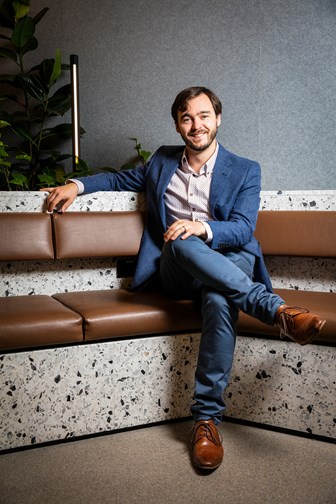Fraser Allison
Media – Photography
Top Designs 2005
2020 – Interactive Design Researcher
I am a Research Fellow at the University of Melbourne Interaction Design Lab, where I have recently submitted a PhD on the design of voice-controlled video games. My current project is on the future of cemeteries, looking at how our approach to death and commemoration might change in the coming decades. I have a keen interest in game design, psychology and how technology shapes our thinking and our experiences.
Do you have a specific design philosophy?
As a design researcher rather than a design practitioner, I’m more interested in understanding how design works than saying how it should work. I don’t believe there are any truly universal rules, it all depends on your goals. For instance, if you are a software designer, it may seem obvious that you should always make tasks easy for the user to accomplish – but if you are designing a video game, the user may want the task to be as hard as they can manage!
Can you explain your trajectory after Top Designs; do you feel that the exhibition had any impact on your next career steps?
After Top Designs I undertook a Bachelor of Communication at RMIT University, where I focused on interactive media and wrote an Honours thesis on how video games can put us into the mindset of a character who sees the world differently than we do.
After university, I dabbled in radio, political writing, games criticism and not-for-profit work, before settling into my first career as a market researcher. I developed a reputation as something of a tinkerer and was eventually put in charge of my firm’s small software design team, making widgets to process and communicate research data.
In 2015, I returned to university to undertake a PhD in the field of human–computer interaction, which I have just submitted this January. The PhD has given me a wealth of opportunities, including the chance to present at conferences worldwide and to work at Microsoft Research in the UK. In 2020, I joined a team of technologists, anthropologists and social scientists to undertake research into the future of cemeteries.
Participating in Top Designs increased my confidence in myself, as a person with a critical artistic eye. My exhibition for Top Designs 2005 was a collection of photographs that showed the small design details of sports cars. My project was perhaps the first piece of work in which I realised that things are often more interesting when you zoom right in on the details than when you only look at the whole.
Do you have any advice for people wanting to work in your field, and what are your plans for the future?
Human–computer interaction is a field made up of a jumble of people from many different backgrounds. A design or computer science degree can provide you with the most direct understanding of the core issues, but every discipline, from theatre studies to medical science, has some bearing on the question of how people and computers affect each other. Figure out what niche you’re interested in and find the people who are already working on that area. A great book to start with is The Design of Everyday Things by Donald Norman.
My goals are to keep doing research, make my small contribution to human knowledge, and continue to have fun with whatever I do, while being a good dad. Most of all, I would like to find ways to keep the needle moving towards climate action, so that my daughter can grow up in a world that bears some resemblance to the one that we have known.







